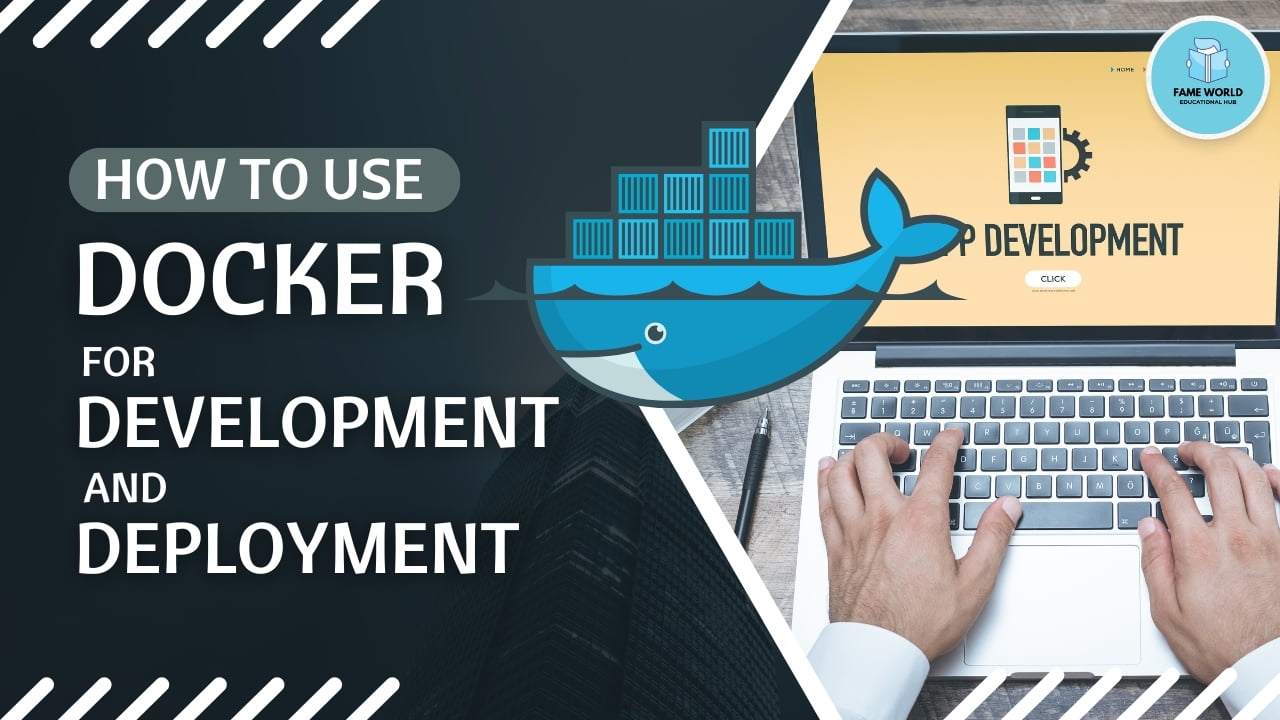Docker has revolutionized the way developers build, share, and deploy applications. By providing a consistent environment across various stages of development, Docker ensures that applications run smoothly from development to production. This blog post will guide you through the basics of using Docker for both development and deployment.
What is Docker?
Docker is an open-source platform that automates the deployment of applications inside lightweight, portable containers. These containers include everything needed to run the application, such as code, runtime, libraries, and system tools, ensuring consistency across different environments.
Benefits of Using Docker
1. Consistency: Docker ensures that your application behaves the same way in development, testing, and production environments.
2. Isolation: Containers encapsulate applications and their dependencies, providing a clean and isolated environment.
3. Portability: Docker containers can run on any system that supports Docker, whether it’s a developer’s laptop, an on-premises server, or a cloud instance.
4. Scalability: Docker makes it easy to scale applications horizontally by adding more container instances.
Getting Started with Docker
# 1. Install Docker
First, install Docker on your development machine. Docker provides installation guides for various operating systems on their [official website](https://docs.docker.com/get-docker/).
# 2. Create a Dockerfile
A Dockerfile is a script that contains a series of instructions on how to build a Docker image. Here’s a simple example:
“`dockerfile
# Use an official Node.js runtime as a parent image
FROM node:14
# Set the working directory
WORKDIR /usr/src/app
# Copy package.json and package-lock.json
COPY package*.json ./
# Install dependencies
RUN npm install
# Copy the rest of the application code
COPY . .
# Expose the port the app runs on
EXPOSE 8080
# Command to run the application
CMD [“node”, “app.js”]
“`
# 3. Build the Docker Image
Use the `docker build` command to create a Docker image from your Dockerfile. Run this command in the directory containing your Dockerfile:
“`sh
docker build -t my-node-app .
“`
This command builds the image and tags it as `my-node-app`.
# 4. Run the Docker Container
Once the image is built, you can run a container using the `docker run` command:
“`sh
docker run -p 8080:8080 my-node-app
“`
This command maps port 8080 of the container to port 8080 on your host machine.
Using Docker for Development
For development, you can use Docker Compose to manage multi-container applications. Docker Compose allows you to define and run multiple containers using a `docker-compose.yml` file. Here’s an example for a Node.js app with a MongoDB database:
“`yaml
version: ‘3’
services:
app:
image: my-node-app
ports:
– “8080:8080”
volumes:
– .:/usr/src/app
depends_on:
– db
db:
image: mongo
ports:
– “27017:27017”
“`
To start your application, run:
“`sh
docker-compose up
“`
Using Docker for Deployment
For deployment, Docker enables seamless transition from development to production. Here are the steps to deploy your application using Docker:
# 1. Push Your Docker Image to a Registry
First, push your Docker image to a container registry like Docker Hub, Amazon ECR, or Google Container Registry. Here’s how to push to Docker Hub:
“`sh
# Log in to Docker Hub
docker login
# Tag your image
docker tag my-node-app username/my-node-app
# Push your image
docker push username/my-node-app
“`
# 2. Deploy to a Server
On your production server, pull the Docker image and run it:
“`sh
docker pull username/my-node-app
docker run -d -p 80:8080 username/my-node-app
“`
# 3. Use Orchestration Tools
For larger applications, consider using orchestration tools like Kubernetes or Docker Swarm. These tools manage the deployment, scaling, and operation of application containers across clusters of hosts.
Conclusion
Docker simplifies the development and deployment process by providing a consistent and isolated environment for your applications. By following the steps outlined in this post, you can leverage Docker to streamline your workflow, from development to production. Happy Dockering!
—
Feel free to share your Docker tips and experiences in the comments below. Let’s continue learning and improving together!



